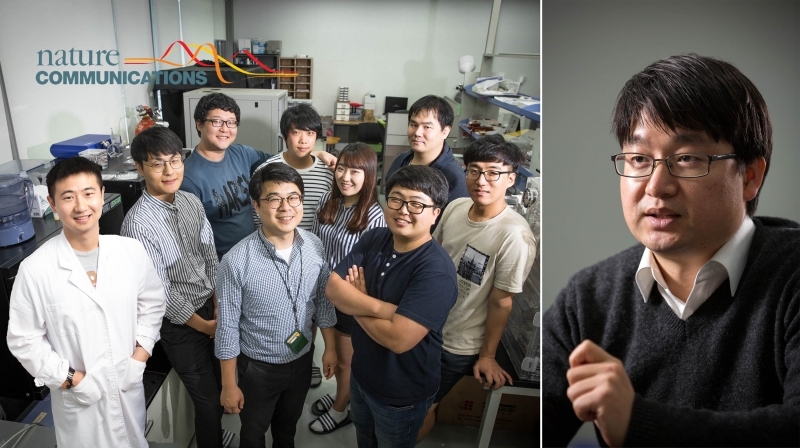A single bolt of lightning produces a relatively large amount of energy in a short period of time. An international team of researchers, affiliated with UNIST has recently developed a new type of power generating device through the principles of lightning strikes. This device converts many kinds of ambient energies, such as vibration, wind, human motion, or sound into usable electric power and is expected to bring bring a new advancement in self-powered electronics.
This breakthrough research has been led by Prof. Jeong Min Baik (School of Materials Science and Engineering) in collaboration with Prof. Zhong Lin Wang (School of Materials Science and Engineering) of Georgia Tech, Prof. Sang-Woo Kim (School of Advanced Materials Science and This device has the potential of converting many kinds of ambient energies, such as vibration, wind, human motion, and even sound energy into usable electric power.Engineering) of Sngkyunkwan University, Prof. Chong-Yun Kang of KIST Electronic Materials Research Center, and Prof. Dukhyun Choi of Kyung Hee University.
Through the study, Prof. Baik and his colleagues have developed a new type of triboelectric nanogenerator (TENG) through the principles of lightning strikes. The new device can generate a large amount of electricity in a very short period of time by artificially implementing the principle of the charge separation mechanism in thunderclouds.
▲Comparison of the electric power output of the artificial lightning generator. The power output increases after the electric double layer is inserted in between the top and the bottom layers of the new TENG.
Lightning is created when liquid and ice particles above the freezing level collide with each other and build up large electrical fields in the clouds. When the charge separation is produced enough, a giant spark occurs between the two charges within the cloud or between the cloud and the ground.
The study carefully analyzes the lightning phenomenon in association with thunderclouds. After careful investigation of the working principle and the process of electric charge generation, charge separation, as well as charge accumulation, the research team came up with a new type of TENG that overcomes the limit of the output performance of the conventional TENG under realistic environments. The team first started with a basic idea to find how the two opposite charges are efficiently separated on the top and bottom electrodes during friction, as observed in thunderclouds.
A typical two-layer structured TENG has only positive charges on the electrodes, limiting the output power. The new TENG; however, is compoased of three layers, in which the key layer, an electric double layer with Al film coated by Au nanoparticles, is inserted between a top and a bottom layer.
▲Charging a smart phone after, using the artifitial lightning generator
Prof. Baik notes, “This structure not only prevents charge loss, but also exibits 16 times higher electrical output performance than those of the two-layer structured TENGs.” He adds, “This new pump-based TENG has the potential of converting many kinds of ambient energies into usable electric power, which could be a new paradigm for scavenging large-scale energy”.
Moreover, through the integration of the TENG with a signal-processing circuit, a wireless sensing system was also developed to demonstrate the capability of the three-layer structured TENG as a practical power source to charge a battery of smart phones/watches.
▲Charging a smart watch, using the artifitial lightning generator
Although further improvement is needed, the team expects that the new TENG will contribute efficiently not only to the realization of self-powered electronics, but could also become a new paradigm for scavenging large-scale energy.
This research has been supported through the Samsung Research Funding Program for Future Technologies by Samsung Research Funding Center of Samsung Electronics. The results of the study have been appeared in the October 5 issue of the journal Nature Communications, a sister journal of the prestigious Nature.
Journal Reference
Jinsung Chun, Byeong Uk Ye, Jae Won Lee, Dukhyun Choi, Chong-Yun Kang, Sang-Woo Kim, Zhong Lin Wang, and Jeong Min Baik, “Boosted output performance of triboelectric nanogenerator via electric double layer effect”, Natural Communications, (2016).

















